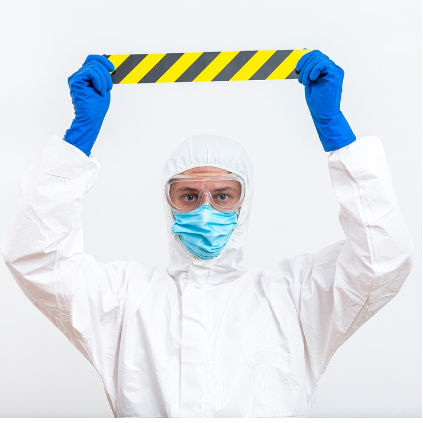Occupational Hazards: The Realities of Toxic Exposure at Work

Key Takeaways
- Toxic exposure in the workplace can lead to severe health complications.
- Understanding common toxic substances and their effects is crucial for prevention.
- Employers and employees must collaborate to minimize risks.
- Legal recourse is available for those affected by occupational toxic exposure.
- Staying informed and proactive can significantly reduce the dangers.
Introduction to Toxic Exposure
Toxic exposure in the workplace is a critical issue that endangers the health and well-being of thousands of workers every year. Despite stringent regulations, hazardous substances can still be found in various industries, from manufacturing to agriculture. Addressing toxic tort cases is essential to ensure that affected individuals receive justice and compensation for their suffering. These cases can highlight areas where existing safety measures need to be strengthened and hold negligent parties accountable.
These incidents often go unnoticed until severe health issues arise. Toxic tort cases highlight the importance of awareness and preventive measures in keeping workplaces safe and healthy for everyone. Employees who are proactive and knowledgeable can recognize such hazards early on and take the appropriate precautions to lessen exposure.
Common Toxic Substances in the Workplace
Workplaces can harbor a variety of toxic substances, including asbestos, benzene, and formaldehyde. Each of these substances poses unique health risks and requires careful handling and monitoring. For instance:
- Asbestos: Asbestos is found in older buildings and construction materials. Inhaling asbestos fibers can lead to serious health problems such as lung cancer, mesothelioma, and asbestosis. Because asbestos-related diseases often take years to develop, early detection and prevention are crucial.
- Benzene: Benzene is a chemical used in industrial solvents, gasoline, and even some household products. Long-term benzene exposure has been linked to blood illnesses such as leukemia. Ensuring that workplaces have adequate ventilation and minimizing the use of benzene-containing products can help reduce risks.
- Formaldehyde: Formaldehyde is a chemical used in manufacturing processes, particularly in the production of building materials and household products. Formaldehyde exposure has been connected to several malignancies and can irritate skin and trigger respiratory issues. Employers and employees need to be vigilant in identifying sources of formaldehyde in the workplace and take appropriate measures to limit exposure.
Health Effects of Toxic Exposure
The health effects of toxic exposure range from acute symptoms like headaches and dizziness to long-term conditions such as cancer and chronic respiratory issues. The Centers for Disease Control and Prevention (CDC) provides comprehensive information on how these substances impact health. Acute exposure can lead to immediate symptoms, while chronic exposure can result in lasting health problems that can severely impact one’s quality of life.
For instance, exposure to high levels of toxic chemicals can lead to severe respiratory issues, neurological problems, and even organ damage. Chronic conditions such as cancer and various respiratory diseases are often the result of prolonged exposure to hazardous substances. Long-term harm can be avoided by being aware of these health risks and obtaining medical assistance as soon as symptoms appear.
Preventive Measures and Safety Protocols
To minimize toxic exposure, workplaces must implement safety protocols, including proper ventilation, the use of protective equipment, and regular monitoring. Education and training programs are also essential in empowering workers to safeguard themselves. Preventive measures include:
- Regularly inspecting and maintaining equipment to prevent leaks and emissions. This includes ensuring that machinery and protective devices are always functioning correctly to reduce the risk of accidental exposure.
- Providing personal protective equipment (PPE) such as respirators, gloves, and safety goggles. Proper use and maintenance of PPE are vital in protecting workers from inhaling or coming into direct contact with toxic substances.
- Implementing emergency procedures for dealing with toxic spills and exposure incidents. This ensures that employees know how to respond promptly and effectively to minimize emergency risks.
- Conducting periodic health assessments and monitoring for early signs of exposure. Frequent screenings and medical checkups can aid in the early detection of health issues brought on by toxic exposure, enabling prompt intervention and treatment.
Employers can build a safer workplace and shield staff members from the risks of hazardous exposure by implementing these preventive measures seriously.
Responsibilities of Employers
Employers are essential to maintaining a secure workplace. They are legally obligated to comply with occupational safety standards and provide necessary resources and training to protect their employees. Key responsibilities include:
- Conducting risk assessments to identify potential hazards. Employers should regularly evaluate the work environment to identify and mitigate any risks associated with toxic substances.
- Implementing safe work practices and providing ongoing training to employees. It is essential to ensure that employees are aware of the risks and know how to work safely with hazardous substances.
- Ensuring all safety equipment is up-to-date and functioning correctly. Maintaining safety equipment and replacing outdated or faulty gear can prevent accidents and exposure incidents.
- Promoting a safe work environment where employees are at ease reporting risks and events. A transparent and supportive environment fosters open communication about safety concerns, making it easier to address potential risks before they become serious problems.
Employers must prioritize their employees’ health and safety by adhering to these responsibilities and continually seeking ways to improve workplace safety practices.
Legal Aspects and Rights
Toxic exposure at work gives workers legal rights and the ability to pursue compensation for their ailments. Legal frameworks are in place to hold employers accountable and provide justice to affected workers. It is crucial to be informed about your rights and the legal recourse available. Understanding the legal aspects can help navigate the complexities of claiming compensation and ensuring fair treatment.
Workers who are exposed to hazardous materials, for instance, can be eligible for reimbursement for their medical costs, missed income, and psychological suffering. Legal support can guide affected individuals through the process of filing claims, negotiating settlements, or pursuing litigation if necessary.
Moreover, public awareness of toxic tort cases can drive change in industry practices and policies, ultimately contributing to a safer work environment for all.
Keep an eye for more news & updates on TechProMagazine!





